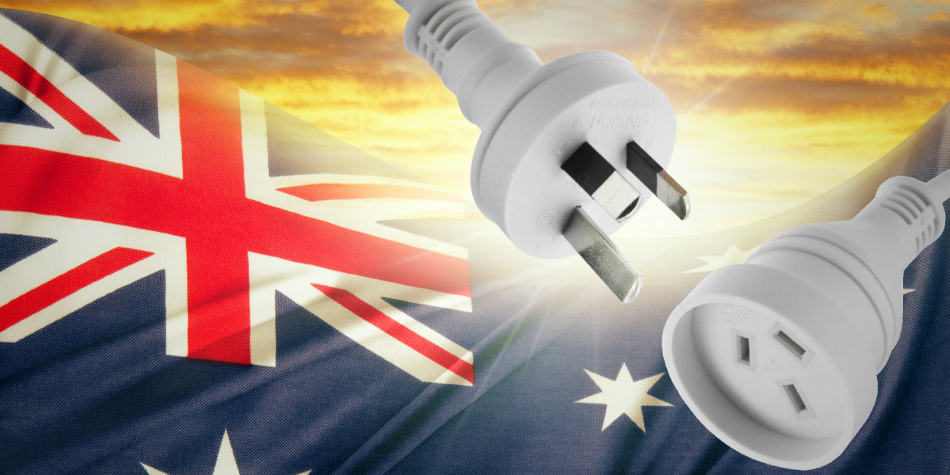Which UK electrical appliances can you use in Australia and how do you adapt them to the Australian electrical system?
No doubt if you’re moving to Australia from the UK you’ll be wondering if it’s worth taking or shipping your electrical goods and appliances. The good news is that it’s not only possible as the Aussie electrical is similar to the UK but it also financially worthwhile due to the cost of replacing items down under.
There is, however, quite a lot of misleading advice and differing opinions on Expat forums and Facebook groups as to what does and does not work.
To make life that little bit less confusing, we’ve compiled this handy guide with everything you need to know about Australia’s electrical system, and how to adapt your electrical appliances to ensure that they are compatible.
Lithium-Ion Batteries: Due to the increased fire risk, we are unable to ship any lithium-ion batteries. They should be removed from all appliances before shipping.
Contents
- How Does the Australian Electrical System Differ from the UK?
- What Plug Do I Need in Australia?
- Do UK Electrical Appliances Work in Australia?
- Can I Ship my Electrical Items to Australia?
- What UK Electrical Appliances Can You Take To Australia?
- Advice on Adapting UK Electrical Items for Australia
- Shipping Batteries from the UK to Australia
- Home Appliance Stores and Electrical Suppliers In Australia
- Need Help with Relocating to Australia?
How Does the Australian Electrical System Differ from the UK?
 The electrical system in Australia is very similar to that of the UK which makes life much simpler if you’re considering shipping your appliances when you move. The Australian electrical system uses 230 voltage, exactly the same electric current as in the UK.
The electrical system in Australia is very similar to that of the UK which makes life much simpler if you’re considering shipping your appliances when you move. The Australian electrical system uses 230 voltage, exactly the same electric current as in the UK.
The good news is that this means that, at least on a basic level, most UK appliances will be compatible with the power requirements in the Australia.
It’s important to understand, however, that just because the voltage is the same, it doesn’t mean that every UK appliance will automatically be 100% compatible. Although they may switch on without a problem, they may not meet all the standards within the Australian electrical system so your appliance may not work as it would normally do in the UK.
10 amps vs 13 amps
One key difference is the amps that each plug can handle. In the UK, plugs are compatible with up to 13 amps but in Australia it’s lower, just 10 amps per plug. If you have any devices which use more than 10 amps you may have problems with fuses blowing in Australia even though they are both 230 volts, so you will need to be careful not to overload sockets.
What Plug Do I Need in Australia?
In the UK, the electrical system uses three pin G type plugs with an earth wire.
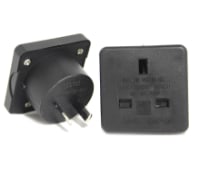 Australia uses I type plugs – these may be either two or three pin plugs, a rather confusing set-up to anyone who’s not used to it. There aren’t any fuses in any of the plugs and frequently the socket is situated lower down the wall than you may be used to.
Australia uses I type plugs – these may be either two or three pin plugs, a rather confusing set-up to anyone who’s not used to it. There aren’t any fuses in any of the plugs and frequently the socket is situated lower down the wall than you may be used to.
You can plug either two or three type I plugs into an Australian plug socket but be aware if it’s just two pins there’s no earthing being provided. The majority of indoor appliances in Australia aren’t earthed so two pin plugs are typically used.
UK plugs aren’t compatible with Australian sockets, even though the two electrical systems use the same voltage. You’ll therefore need an adaptor to use your UK appliances and most of these have just the two pins.
Two pin adaptors are fine, but if your appliance needs to be earthed, you’ll need to purchase a three pin Australian adaptor or buy an Australian plug. You can tell whether your appliance requires earthing by the top pin on the plug; if it’s plastic you won’t need to earth it.
Remember that travel adaptors aren’t designed for long-term use and should only be considered as a temporary solution. It’s recommended to replace UK plugs with the I type Australian plug sooner rather than later.
Do UK Electrical Appliances Work in Australia?
 As we’ve already discussed, the UK electrical system is compatible with the one in Australia, but the biggest problem you might experience is the lower amp restriction. This effectively means that only appliances of 2400 watts and below will be safe to use in Australia.
As we’ve already discussed, the UK electrical system is compatible with the one in Australia, but the biggest problem you might experience is the lower amp restriction. This effectively means that only appliances of 2400 watts and below will be safe to use in Australia.
Every manufacturer has their own electrical power levels so it’s imperative to check the manual. Don’t make the mistake of assuming it’s only the larger items that may be problematic as many small electrical appliances have much higher wattage than you think.
For example, in the UK it’s not uncommon to have irons with 12.5 amps, or a kettle of 13 amps. Hairdryers are often right on the cusp while tumble dryers may be too high. It isn’t a good idea to attempt to use appliances which are too high as you’ll just blow the system. Do your checks before getting quotes for shipping to Australia and making the decision about what to take.
Can I Ship my Electrical Items to Australia?
Providing you owned the electrical appliances before moving to Australia and they are for your personal use, you can bring them into Australia without any duty applying. Many items have a statutory length of time that you must have owned it before transportation; this period may vary but it’s typically 12 months.
Being able to bring them in does not guarantee compatibility in any way, so it’s up to you to do your homework before going to the expense of transporting your items overseas.
If you decide to go ahead and ship your electrical goods to Australia, be aware of import restrictions which may inadvertently apply, such as standing water in machinery or food, plant or animal remnants. This may not pose much of a problem for electrical items such as TVs, printers and laptops, but dishwashers and washing machines will need to be scrupulously clean and completely drained.
What UK Electrical Appliances Can You Take To Australia?
Before you decide whether to take your electrical appliances to Australia, make sure you check whether they will properly work first. If it’s not completely compatible, the expense you’ll incur trying to convert the fittings – plus the shipping – may mean that it’s cheaper and easier to just buy once you’re there.
For the rest of your items, it’s advisable to balance up the cost of shipping against the price of buying it new. Get an online quote to find out how much the shipping will be, and that will help you to make the right decision. Note, most white goods in Australia are very expensive compared to UK prices and shipping is the cheaper option.
Small Kitchen Appliances
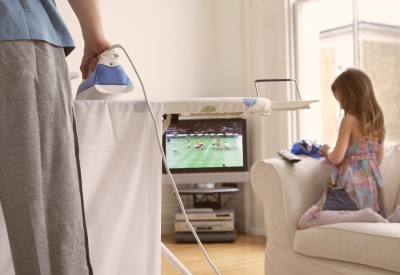 Most small electrical appliances and devices such as blenders, mixers, juicers, vacuum cleaners, microwaves etc. will work just fine in Australia. In fact, items such as Dysons can be particularly expensive there so are well worth bringing.
Most small electrical appliances and devices such as blenders, mixers, juicers, vacuum cleaners, microwaves etc. will work just fine in Australia. In fact, items such as Dysons can be particularly expensive there so are well worth bringing.
Just do not overload one socket and surpass the ten amps that Australia runs off by using too many appliances together.
Small Appliances With Heating Elements
Appliances with heating elements such as irons, toasters, kettles, hair dryers and hair straighteners need to be used with caution. Some people report having no problems at all, whilst others have problems with the Australian plugs only being 10 amps rather than 13 causing fuses to blow or the items to cease working after a while.
It can be worth checking the amps and voltage required before deciding whether to take them with you.
White Goods and Large Kitchen Appliances
Many people mistakenly think that white goods such as fridges, freezers, washers, dryers and dishwashers are bulky and so not worth the cost of shipping.
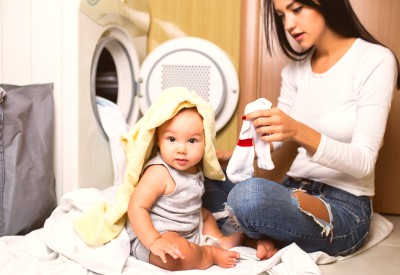 However, white goods are expensive to replace and you’ll be financially better off taking yours with you. Similar to other kitchen appliances, these also need to be clean and dry to prevent any contaminated dirt or banned foods making their way to Australia in your laundry machine or dishwasher. Moreover, drums need to be secured to protect the machine from damage.
However, white goods are expensive to replace and you’ll be financially better off taking yours with you. Similar to other kitchen appliances, these also need to be clean and dry to prevent any contaminated dirt or banned foods making their way to Australia in your laundry machine or dishwasher. Moreover, drums need to be secured to protect the machine from damage.
If your washing machine is compatible with the Australian system, and most are, this is one appliance you may want to give serious consideration to taking. Front loading washing machines are commonplace in the UK but in Australia, top loaders are the norm. If you want a front loader, you’ll have to pay much more for the privilege so if yours is in good condition, it could be worth making plans to ship it. Don’t forget to secure the drum so that no damage occurs in transit.
Refrigerators will often work satisfactorily once the plug has been replaced too so again taking this will save you unnecessary expense when you arrive in Australia.
Computers, Gadgets and Other Electronic Devices
Electronic devices such as printers, laptops and computers will usually work in Australia and will not be a problem to bring into Australia.
The main consideration when transporting these items is if they have lithium-ion rechargeable batteries. See the section below that addresses how to pack and transport lithium-ion batteries by air freight and sea freight.
Will UK TV sets work in Australia?
The short answer – yes with some modification.
TVs are common items for UK residents to take with them when they relocate. However, Australia TVs work on a different frequency to TVs in the UK which often results in the loss of channels, sound or both.
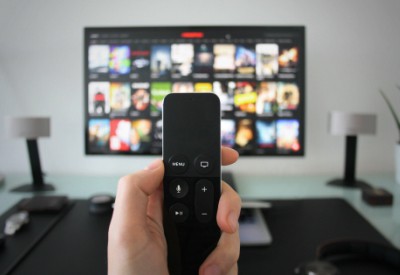 Searching deep in your TV’s menu may solve this problem by switching settings from PAL I to PAL B/G. Your TV’s manufacturer may also be able to help you transfer your TV into a more locally operating one.
Searching deep in your TV’s menu may solve this problem by switching settings from PAL I to PAL B/G. Your TV’s manufacturer may also be able to help you transfer your TV into a more locally operating one.
TV will work by getting a signal through a set top box so another solution is to use a service Sky TV, Foxtel digibox, Smart BluRay player or other set top box (which can be purchased cheaply in Aussie electrical stores) to run your TV through. This will solve issues that prevent your TV from accessing audio or visuals.
So if you want to avoid your family fighting over the TV it may be well worth your while shipping any spare TVs sets you have down under!
For shipping your TV safely to Australia you’ll need to ensure it is well packed. You can use the original box or packaging or your shipping company will be able to provide a custom made wooden crate.
Some good news though for UK residents is that Australia does not require you to purchase a TV licence.
Game Consoles. Media and DVDs
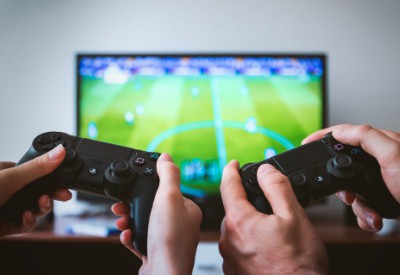 Australia is PAL region, same as UK and, as previously, stated uses the same 230 voltage so you should have no problem using consoles such as Xbox 360 / One, Nintendo, PS3 & PS4 etc.
Australia is PAL region, same as UK and, as previously, stated uses the same 230 voltage so you should have no problem using consoles such as Xbox 360 / One, Nintendo, PS3 & PS4 etc.
Your UK online gaming accounts will work fine or you can set up a new Oz account if you prefer.
The UK is Region 2 for DVDs, Australia is Region 4 but if you have a multi-region DVD player or the DVDs you have are region-free, then they will work.
Using UK Landline Telephones in Australia
UK telephones should work fine as Australia use the same telecom system as BT. However, technically they should be tested and approved otherwise it is illegal to connect it to the phone network in Australia.
Do UK DAB Radios Work in Australia?
Australia uses the newer DAB+ system whereas the UK uses the older standard DAB system. You will therefore need to check than your DAB radio can support DAB+
Currently digital radio is only available in large Australian metropolitan areas such as Sydney, Brisbane, Melbourne, Adelaide and Perth. Canberra, Darwin and Hobart, but it is rolling out to other areas.
UK FM/AM radios will work fine in Australia.
Importing Lawnmowers and Outdoor Goods
Lawnmowers and outdoor goods are convenient and worthwhile possessions to take with you to Australia, especially when homes there often come with more outdoor living space and bigger gardens.
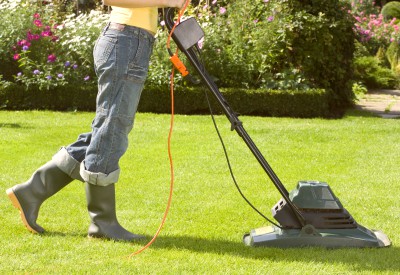 However, biosecurity regulations come into full force on these items and you will need to make sure there is not a spec of dirt on them to pass border security checks. If they are deemed not clean enough and a potential hazard to Australia’s ecosystem, it is likely that you will have to pay for them to be cleaned or be destroyed.
However, biosecurity regulations come into full force on these items and you will need to make sure there is not a spec of dirt on them to pass border security checks. If they are deemed not clean enough and a potential hazard to Australia’s ecosystem, it is likely that you will have to pay for them to be cleaned or be destroyed.
So if you can’t thoroughly clean your lawnmower and are unsure of what garden you’ll have in Oz, then you may well be better off leaving it behind.
Advice on Adapting UK Electrical Items for Australia
Using UK to Australia Travel Adapters
The simplest solution when travelling to Australia is to use travel adaptor plugs which can be purchased cheaply in the UK before you go. These mains power adaptors work for Australia too.
 However, whilst ideal for short term use, such as going on holiday to Australia, they are not meant for long term use. Therefore, whilst these may be good to get you started you should think about replacing plugs on items you use regularly and especially those that have a higher power load.
However, whilst ideal for short term use, such as going on holiday to Australia, they are not meant for long term use. Therefore, whilst these may be good to get you started you should think about replacing plugs on items you use regularly and especially those that have a higher power load.
Another solution is to purchase a UK to Australia extension plug adapter which has multiple sockets. This is a safe and easy way to convert your UK electrical items and you’ll find it a lot cheaper to purchase a few of these online before you leave the UK.
Avoid Overloading Sockets and Extension Leads
Earlier in our guide we mentioned the difference between the Australia and UK electrical systems, namely that Australia maxes out on three fewer amps than the UK. In practice, this means that Australia outlets will let you run up to 2300 watts while the UK will allow 3000 watts.
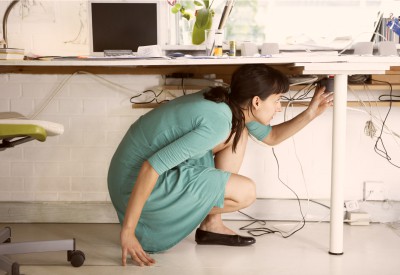 If you run appliances below 2300 watts then using Australia’s electrical system can be considered safer than the UK’s. This is because if any defects occur, the fuse within a cable extension will blow quicker than it would in the UK.
If you run appliances below 2300 watts then using Australia’s electrical system can be considered safer than the UK’s. This is because if any defects occur, the fuse within a cable extension will blow quicker than it would in the UK.
The main thing to consider is the number of watts you are using. The appliances you load into an extension cable must not overload sockets in Australia. Ultimately, this means that you may not be able to run all the same appliances on one extension cable like you used to in the UK.
Being aware of this and ensuring you do not overload sockets or extension leads in Australia should be a priority.
How to Change a UK plug to an Australian one
Officially it is illegal to change a plug in Australia unless you are a licensed electrician. Competent UK DIY enthusiasts have therefore been know to change plugs themselves before moving to Australia!
Here’s a video from a UK migrant to Australia showing how he changed plugs and also, like many UK expats, uses a UK extension lead to power his UK appliances. Although an NZ video it applies equally to Australia.
Whilst it is quite a simple procedure to change plugs, we recommend for safety reasons that you do use a qualified electrician – especially if you are unfamiliar with Australian wiring.
Shipping Batteries from the UK to Australia
You may have not given much thought to the batteries you will send to Australia, but there are strict regulations that you need to know when shipping batteries internationally. This is because batteries can be a safety risk and be the cause of fires. Sending batteries by air freight and sea freight invoke different rules. Here is what you need to know:
Sending Standard Batteries
NOTE: We recommend removing your batteries from device before shipping – if they leak in transit, your item will be ruined.
Sending standard lithium batteries such as AA or AAA batteries is not recommended when using sea freight. However, it is not against the law to do so when contained in a device with a hard plastic shell or within hard plastic casing. When transporting these types of batteries with air freight, they must be placed inside their respective device and cannot be packaged in any other material or casing.
Sending Lithium-ion Batteries
Sending lithium-ion batteries is possible in both sea freight and air freight by leaving them in their devices or by placing them in a hard plastic case. However, there is an additional rule when transporting them by air freight. In these situations, the lithium-ion battery must have a watt-hours rating of less than 100.
NB: You can also only send a maximum of 4 by air, with a maximum 2 per package.
Sending Batteries Inside Power Tools
Sending batteries inside power tools is significantly different between using air freight or using sea freight. In the former, the batteries must be attached to the device and any spares must be packaged in a spare container made of hard plastic.
On the other hand, when sending these batteries by sea freight they must be placed in the same type of packaging but there is no restriction to how many can be placed in each box.
NB: For air freight, no pack can contain more than two batteries and no consignment can contain more than four.
For more details see our comprehensive guide to shipping batteries overseas.
Home Appliance Stores and Electrical Suppliers In Australia
There are plenty of electrical retailers and suppliers in Australia with branches in most major cities or you can order online.
You can also use these websites to do a price comparison – but remember even if electrical appliances are not that much more expensive in Australia, think carefully how much it would cost to replace them all. You will likely be better off shipping items and allocating the money you save to your property or emergency budget.
Here’s a few electrical store options to get you started:
Home Appliance / Electrical Stores:
https://www.thegoodguys.com.au/
https://www.harveynorman.com.au/
https://www.appliancesonline.com.au/
https://www.domayne.com.au/home-appliances
Electrical Wholesalers:
https://www.sparkydirect.com.au/
http://electricaldistributors.com.au/
Need Help with Relocating to Australia?
If you’re planning on moving house to Australia, careful planning is the key to making the move go smoothly. Here at PSS International Removals, we have many years of experience in helping movers from all over the world relocate to a different country.
We understand that the costs of moving can be crippling so we keep our prices low and competitive. To find out more about how we could help you, get in touch with a member of our friendly team today.
First published 19/08/2019
Last Updated 13/07/2022

